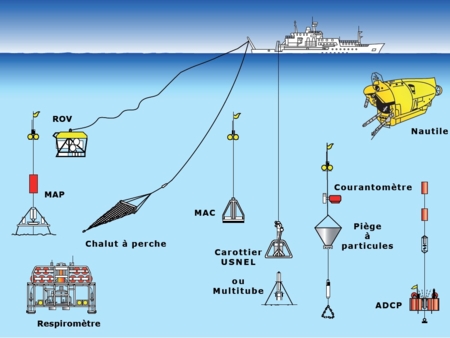Characterisation of the DNA polymerases from Pyrococcus abyssi in the presence of damaged DNA
Hyperthermophilic archaea cope with harsh conditions such as high temperatures, pH shifts and ionising radiations. Such environments favour the apparition of DNA lesions, Here, Pyrococcus abyssi (Pab) was used as an attractive model to analyse the impact of DNA lesions onto the maintenance of genome integrity. The 1st part aimed at detecting DNA damages in the genome of Pab and showed that endogenous AP sites and the oxidized DNA base 8-oxo-dG persist at a higher level in Pab genome compared with E. Coli. Under oxydative stress conditions performed in a gas-lift bioreactor, the 8-oxo-dG increasing rate is correlated to the important cell survival diminution, assessing the genotoxic effects of this stress on Pab. The 2nd objective was to unravel the behaviour of the replicative DNA polymerases from Pab, PabpolB (Familly B) and PabpolD (Familly D). In presence of damaged DNA. Both Pabpols are able to bypass 8- oxo-dG and 8-oxo-dA whereas they are blocked by the AP site. Steady-state kinetics reinforced that Pabpols are high-fidelity DNA polymerases onto undamaged DNA. Moreover, Pabpols preferentially inserted dAMP opposite an AP site albeit inefficiently. Their exonuclease function seemed to endow with an important role in the protection against mutagenesis since it acts as a kinetic barrier, preventing misincorporation. The incorporation of the dAMP is also favoured in front of 8-oxo-dG by both Pabpols. However, only Pabpol inserts a dAMP or a dTMP opposite 8-oxo-dA. The biotechnological 3rd part showed that both Pabpols are able to amplify damaged DNA by PCR.







